'A broken system': Copley, other fire departments sound alarm over nursing home calls
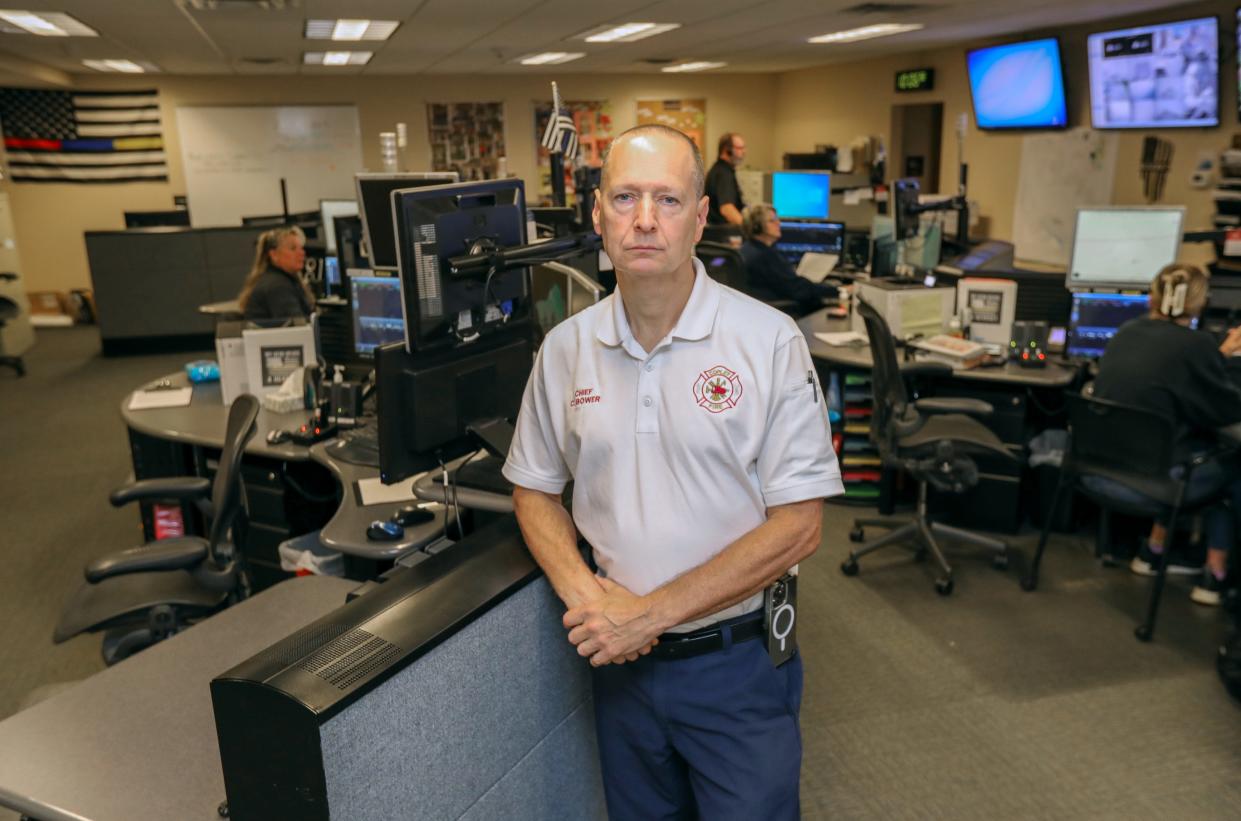
Whenever dispatchers answer a 911 call for Copley Fire Department's EMS, there’s at least a 1-in-4 chance the caller is seeking medical help at a nursing home.
An aging population with increasing medical needs — along with a shortage of private ambulance providers – is putting a strain on some local fire departments, which are being called on to respond to more calls and provide more transports to emergency rooms.
The issue has become such a problem in Copley that officials recently put a moratorium on the construction of skilled nursing facilities in the township until a solution is reached. No new facilities are proposed at this time.
Copley Fire Chief Chris Bower said the number of calls just from skilled nursing facilities has skyrocketed in recent years.
Last year, 655 of the township’s 2,400 calls for emergency medical services came from skilled nursing facilities.
“That is very significant for us,” Bower said.
And that is just the skilled nursing facilities, Bower said. Assisted living and senior housing developments push the number even higher.
"The moratorium is to give us an opportunity to better analyze the problem and to work with other stakeholders on the issue," Bower said.
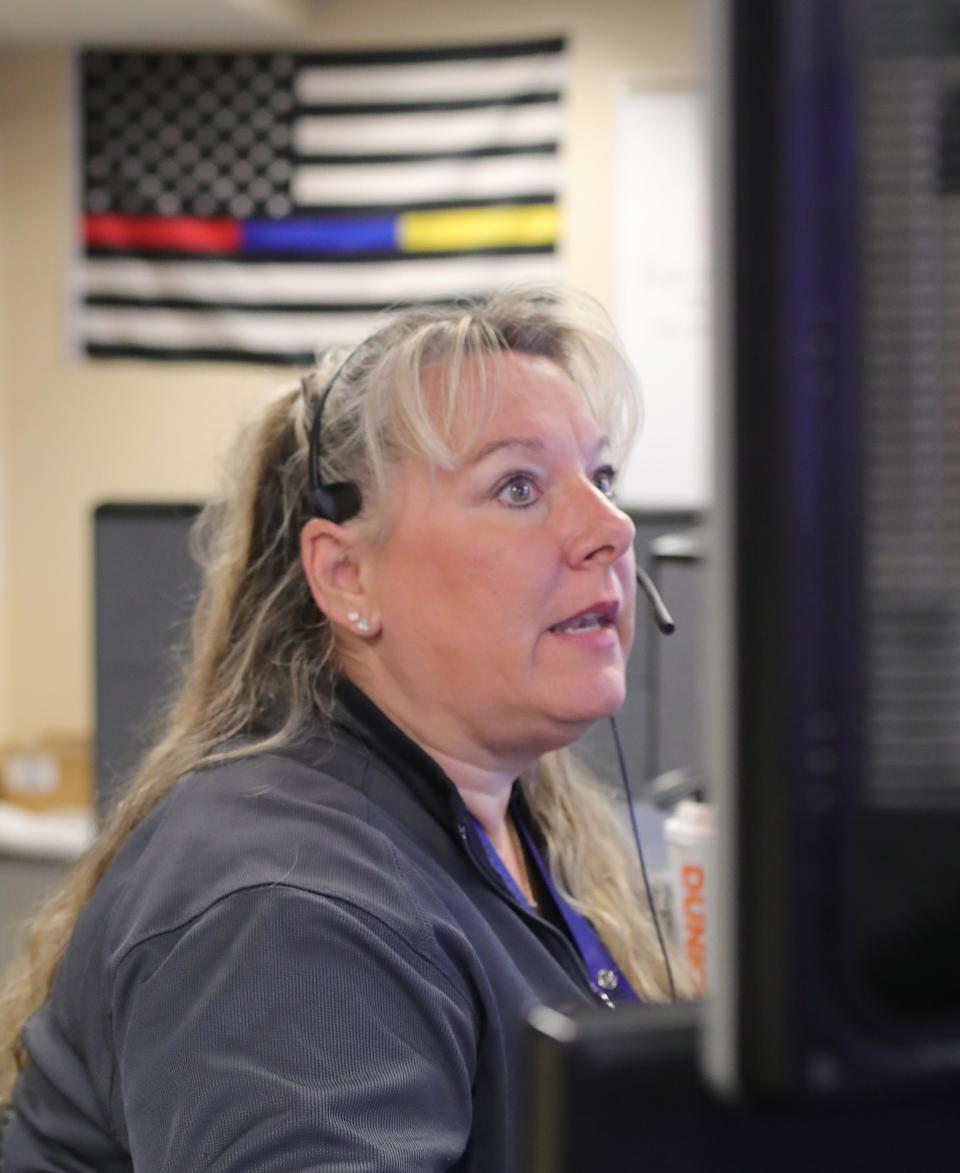
What’s causing the EMS crisis in some communities?
Chris Foster, the CEO with Ohio Ambulance Solutions, said the low rate of reimbursement from Medicare and Medicaid is a huge problem. Ohio Ambulance Services is headquartered in Euclid, but operates a satellite office in Twinsburg and serves Summit County.
The majority of nursing home residents statewide are covered by Medicare and Medicaid, according to the Kaiser Family Foundation.
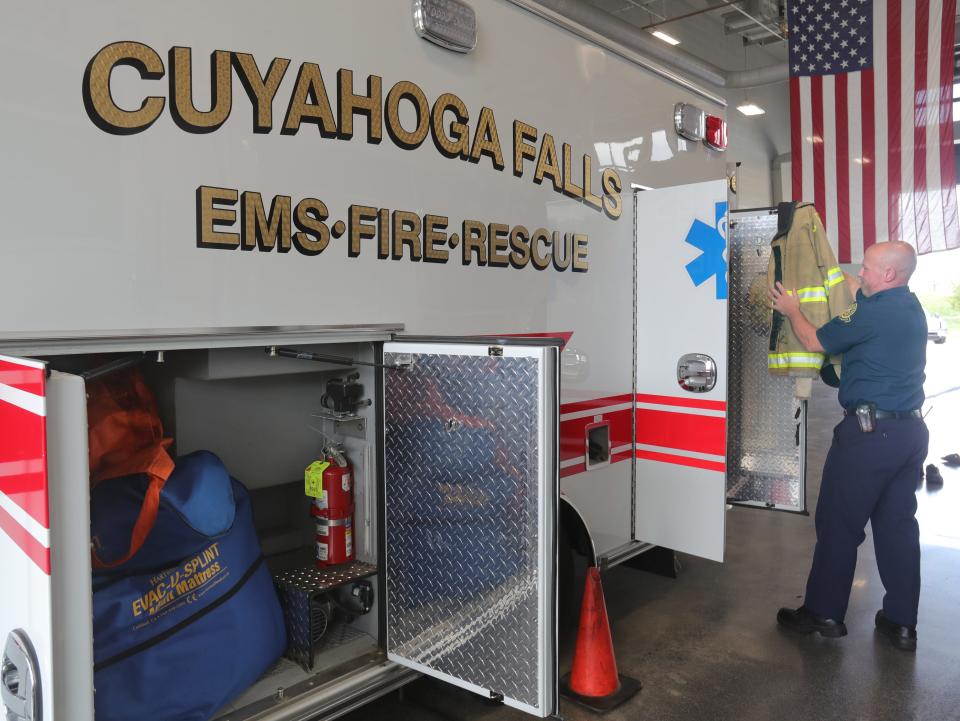
"Reimbursement is below the cost to actually provide the service," Foster said.
One cost is the need to have an ambulance ready at all times, Foster said. "It's been an issue for several years."
This doesn't mean that private EMS companies such as hers won't take Medicare or Medicaid patients.
"We just have to be innovative and offer different services," she said. "We have to manage our payer mix and not take too many Center of Medicare and Medicaid Services calls."
Adding to the concerns, some private EMS services are cutting back or leaving the region altogether.
For example, American Medical Response, which worked with the city of Akron for 50 years until this summer, let its contract with the city expire.
According to the Ohio Department of Public Safety, AMR’s departure leaves nine private ambulance companies operating in Summit County.
In 2022, Akron paramedics transported about 12,000 to area emergency rooms, and AMR transported 13,000. Under the contract the city's paramedics handled urgent runs, while AMR took patients whose conditions were not life-threatening.
The arrangement worked, AMR officials have said, until early last year when Ohio passed a new law aimed at protecting consumers from unexpected medical bills, including ambulance costs, which impacted AMR's bottom line.
In a statement sent by AMR in March, officials said the law forbids out-of-network medical facilities and services, including ambulance services, from balance billing patients beyond what commercial insurance providers deem as a reasonable payment.
"The result of this has been a loss of revenue for every type (municipal or commercial) of ambulance provider in Ohio,” AMR said.
Private ambulance companies can't raise patient fees or expect higher payments from insurance companies, AMR stated.
"Those rates are set years in advance," AMR stated. "This new and unexpected inclusion of ground ambulance into the law placed further financial roadblocks in front of all Ohio ground ambulance providers."
AMR also said that the state's Medicaid rate does not fully cover the expenses needed to transport patients.
"AMR continues to appeal to the state legislature for a reimbursement that covers the cost of patient care for EMS providers, but the last increase came in 2019, before pandemic-driven increases in the cost of healthcare across sectors," AMR stated. "Meanwhile, participation in Medicaid is increasing."
Tough choices
Joseph Natko, the chief for the Akron Fire Department, said that with AMR stopping its services for patients with non-life-threatening issues, which was most of the calls to senior facilities, the fire department will have to make some tough choices.
As of now, Akron's nine nursing homes make up only 2% of the city's EMS runs.
Senior facilities used to contract their own private ambulances for non-emergency hospital visits for admissions or testing, Natko said. To cut costs, they started calling ambulance services on an as-needed basis. However, if a facility found out that there would be a long wait for transport, they would call the city for assistance.
When that happened, the city would respond and then call AMR to take over the transport.
Natko said the city's EMS crews will now only be able to respond to acute emergencies.
Sam McCoy, the senior vice president of elder rights at Direction Home, said the agency receives very few complaints from nursing homes and its residents involving ambulance transport issues.
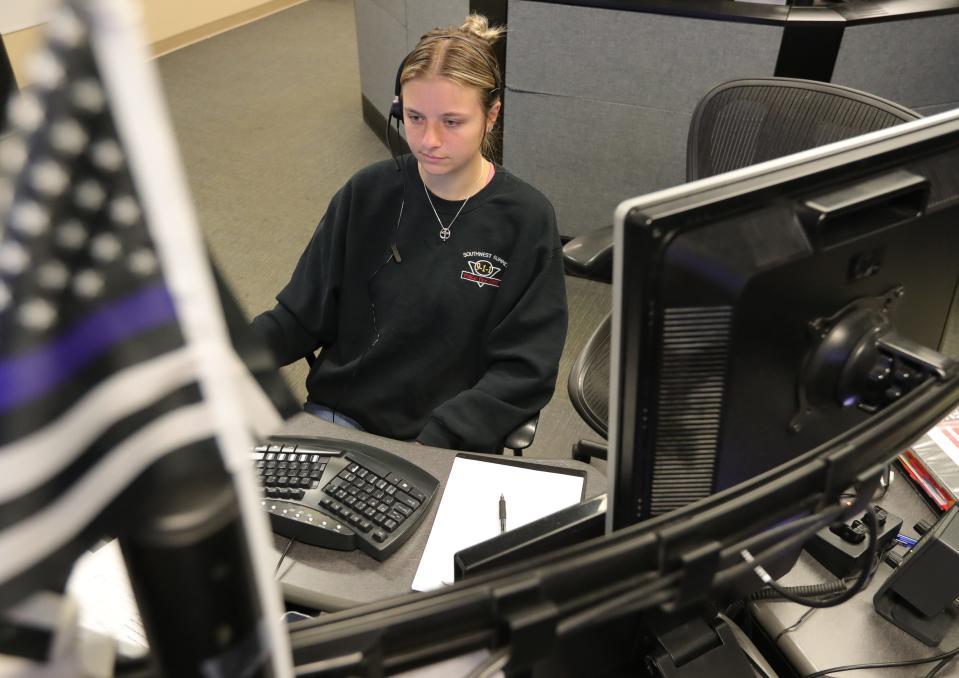
"However, the complaints we encountered most frequently resulted in missed appointments due to miscommunication between residents and families and the transportation scheduler at the facility, or occurred when the scheduler forgot to call for an ambulance," he said.
With AMR's departure, McCoy said the impact could be felt in the community but he didn't see a significant impact on nursing home residents.
"At least not yet," he said. "Direction Home case manages thousands of older adults in the community setting. These residents may be the most immediately impacted by the AMR’s withdrawal."
Kristen Dillard, the marketing leader for StoryPoint Group, said that Danbury and other area StoryPoint Group communities haven't had issues getting transport for residents. Danbury Senior Living has 19 facilities in Ohio, including in Cuyahoga Falls, Tallmadge and Hudson.
"In the event of an emergency, these first responders provide exceptional care to ensure our residents' health and safety, and for that, we’re extremely grateful," Dillard said. "We encourage our team members to maintain the great relationships we have by partnering with local first responders, inviting them to attend community events, offering complimentary breakfasts and more."
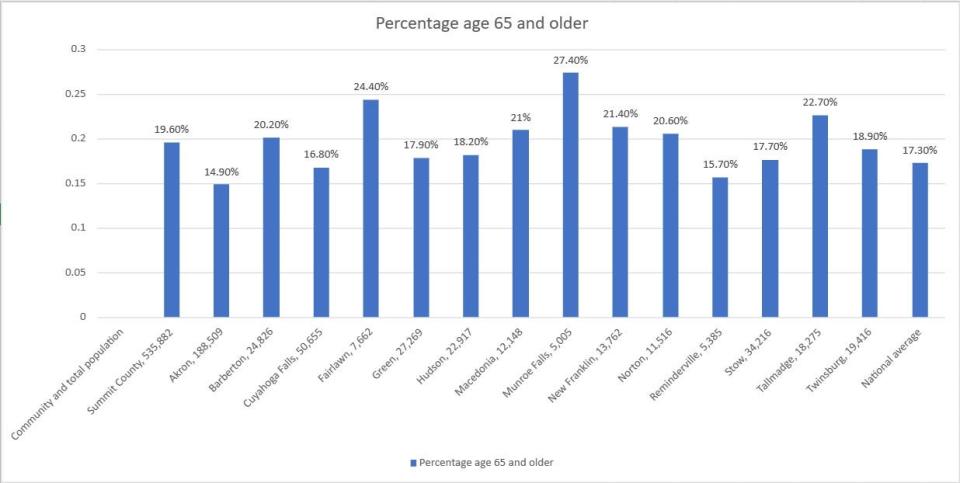
Population of those 65 and older, number of senior residences, expected to increase
The issue of EMS services and transport for the elderly has the potential to get more problematic as the population ages.
The U.S. Census Bureau projects that in 2050, the U.S. population ages 65 and over will be 83.9 million, nearly double what it was in 2012 at 43.1 million.
The Ohio Department of Health licenses and/or certifies about 960 nursing homes and facilities in the state, with 43 skilled nursing facilities and 44 assisted living centers in Summit County. Many companies that provide residential services to the senior population offer both skilled nursing and assisted living within the same facility, so there is overlap in the numbers.
Several Summit County communities have a higher percentage of residents who are 65 and older than the national average of 17.3%.
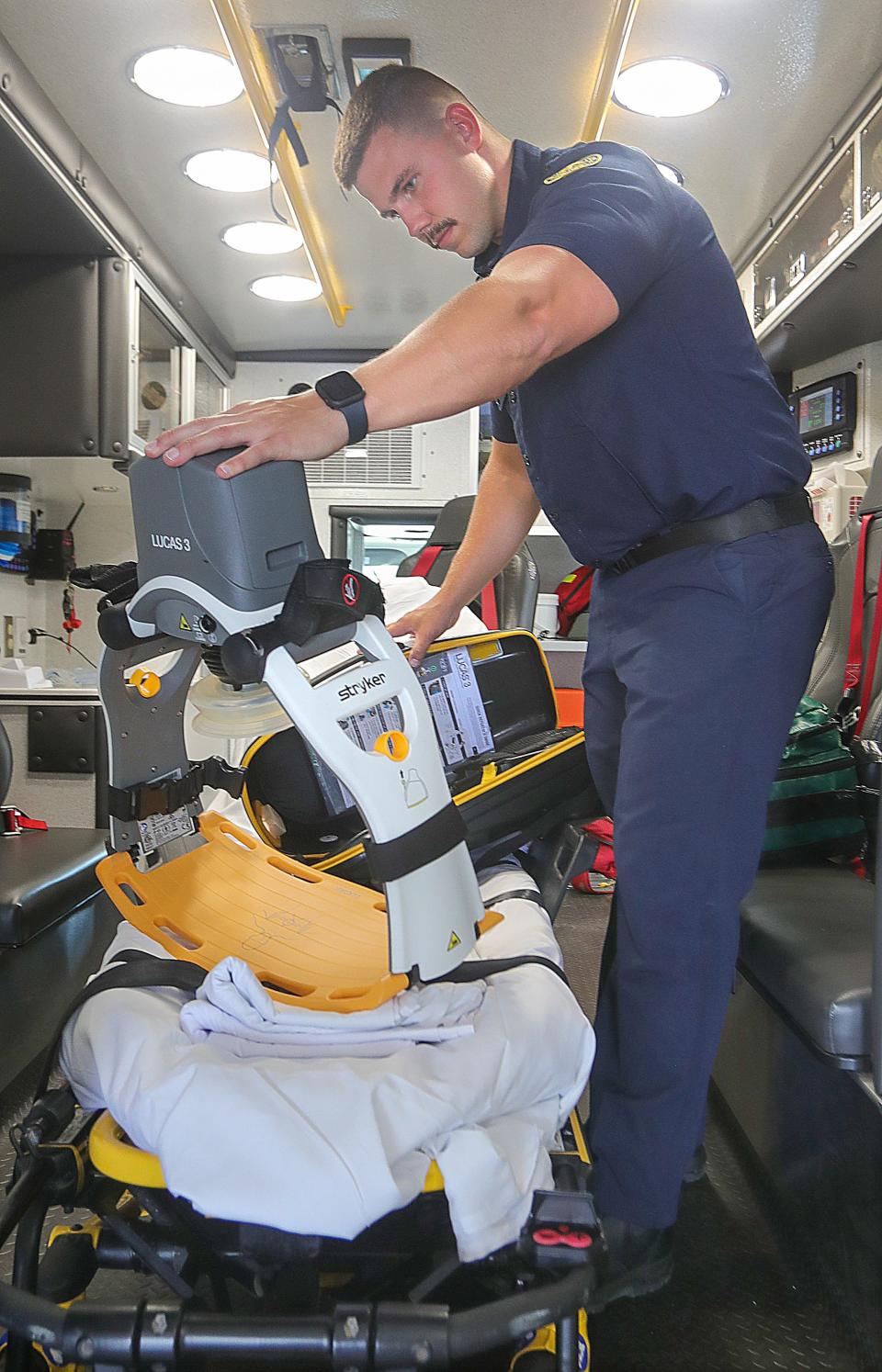
Munroe Falls has the largest percentage of residents who are 65 or older, at 27.4%, or more than a quarter of its population of 5,005, according to the United States Census. Fairlawn has the next largest percentage of those 65 and older, at 24.4%, with Tallmadge at third with 22.7%
Akron's population of 65 and older is well below national average at 14.9%, as is Cuyahoga Falls at 16.8%, and Reminderville at 15.7%
Copley Fire Department becomes last-resort transporter for nursing homes in non-emergencies
In Copley, a shortage of private ambulance companies that are willing to serve nursing homes is putting a strain on the township fire department.
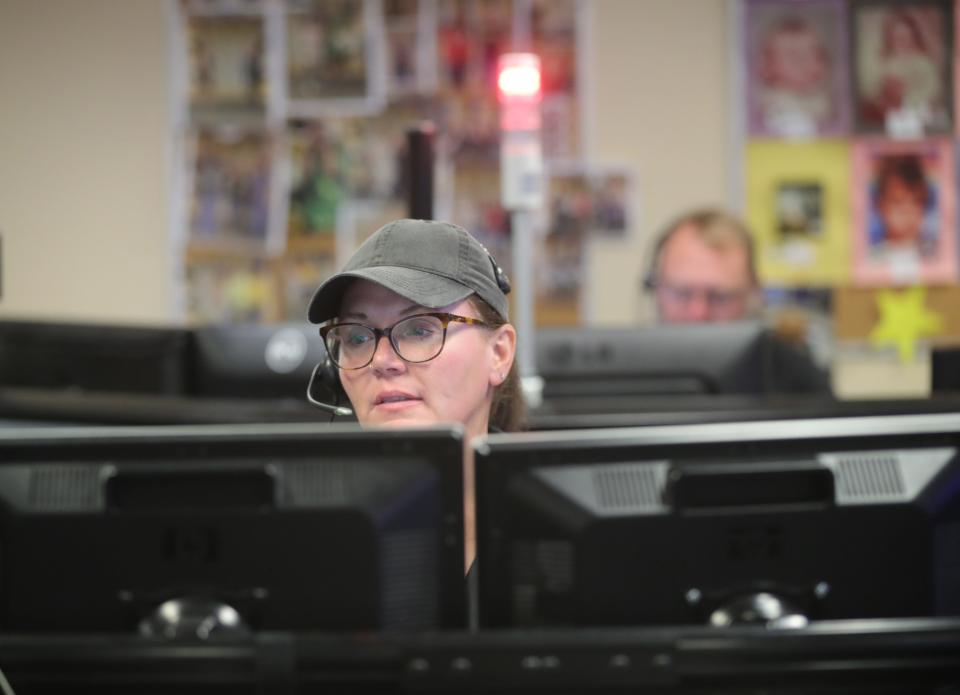
According to information from the township, Copley has around 18,400 residents, with 14.1% of the population at 65 and older.
The township has nine assisted-living and/or skilled nursing facilities, said Loudan Klein, the director of community and economic development.
Not all 911 calls to nursing homes wind up with transports to a hospital emergency room, Bower said. Of the calls they receive from skilled nursing facilities, about 15% wind up not being transported.
One big issue is that private ambulances, which traditionally provide non-emergency transport to hospitals and for medical appointments, often are not available or are no longer willing to make such trips.
"We went on a call to a skilled-nursing facility, where they tried to call a private EMS," Bower said. "They were given a four-day window for arrival."
However, Bower said he did not place blame on the private ambulance companies nor the facilities that house and assist the elderly.
"I'm not unsympathetic to their plight," he said. "It all goes back to a broken system. Many communities in Summit County are struggling with the call volume that is generated by skilled nursing facilities. In Copley, we just so happen to have a lot. The problem for us is it's exacerbated locally. What our challenge is is to make sure we are available for the true emergencies. When our services are being used to fill in cracks in the system, we are not available for those true emergencies."
One issue private ambulance companies deal with, Bower said, is that their runs at a hospital ER may not always get top priority.
"Hospitals try to get us out of there so we can go back out on other calls," he said. "It's a very delicate system. If one thing gets out of whack, it can impact other health care areas. Things have to change."
Fairlawn, Barberton and Green also looking for EMS solutions
Fairlawn Mayor Russell Sharnsky said that calls to skilled nursing facilities made up about a quarter of the city's EMS runs.
One issue that can exacerbate the situation is if the EMS squad has to wait a while at the emergency room. The crew waits with the patient until that patient is taken care of — but sometimes the wait can be lengthy. This was a major problem at the height of the COVID-19 pandemic, although things have improved in recent years.
Barberton Fire Chief Stephen M. Ionno said EMS calls have been slowly increasing for the past 25 to 30 years due not only to an aging population, but patients not having a regular physician and a lack of regular checkups. Less than 10% of calls come from skilled nursing facilities.
"As a committee, many avenues are being explored," Ionno said of the increasing number of calls. "It will take some time and trial and error to find solutions."
Valerie Wolford, the communications manager for Green, said that 69% of EMS calls were from residents who were 55 or older. Green currently has five senior living centers; in 2022, 674 calls came from those facilities.
"Currently we average about one call per number of beds of all our facilities per year," Wolford said. "Unless we see additional facilities built in Green, we should not see the average increase at our senior facilities."
There are currently no plans for additional senior living facilities, Wolford added.
According to the annual report from the fire department, calls have increased steadily from 4,179 in 2019 to 5,059 calls in 2022.
In late 2018, the city implemented its Community Paramedic program to increase access to primary and preventive care for the underserved.
The program, overseen by Fire/Medic Vincent Deluca, provides health and safety assessments, fall prevention training, chronic disease monitoring education, medication management, and hospital discharge follow-up visits. DeLuca also helps provide residential fire safety inspections and install smoke and carbon monoxide detectors, grab bars and handrails through a partnership with the American Red Cross and other local sponsors.
Last year, the Community Paramedic program made 215 visits.
Experts say better reimbursements, telehealth and increasing medical services could address issue
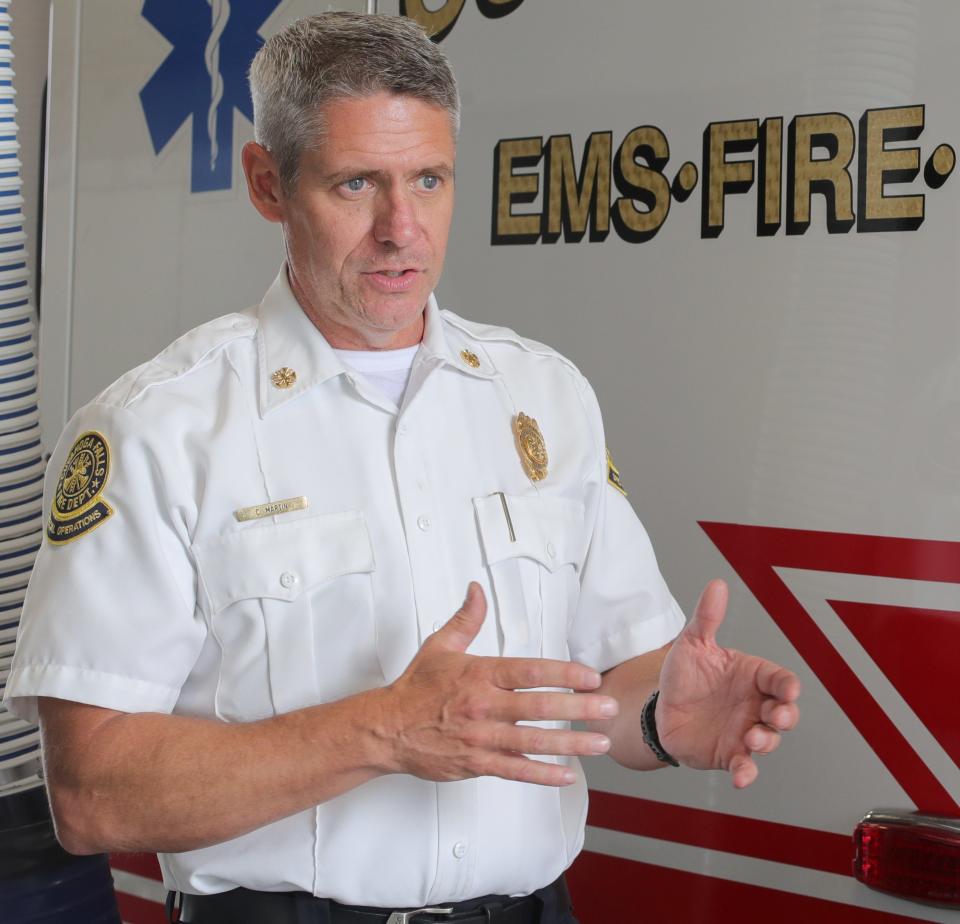
Cuyahoga Falls Fire Chief Chris Martin said area fire departments are looking at multiple ways to address the emergency medical needs of their aging populations.
Martin said that last year, nursing homes accounted for 1,495 of the 7,342 EMS calls.
"With nursing facilities, it's not that they want to keep calling us," Martin said. "They are short on resources themselves. These facilities are in a really difficult spot."
To help, the Cuyahoga Falls Fire Department recently started assigning delegates to work with the city’s 12 senior residential facilities.
The delegates introduce themselves, get to know the staff at the facility and then work with the staff to address each other’s concerns. For example, Martin said, having paperwork ready and available by the time a squad arrives saves a lot of time.
"I've gotten feedback that it works," Martin said.
Another issue has been residents at assisted-living facilities calling 911 themselves without staff knowing about the call, Martin said.
By working more closely with the city's senior facilities, they can make better decisions on whether a patient needs the help of EMS, Martin said. There are times when it's better for the patient to not have them transported to a hospital emergency room, which can be a traumatic experience, particularly for those who may have dementia.
"Patient care is what matters," he said. "A lot of times, it's not the best decision to transport someone."
Another possible solution could be setting up a telehealth system between area senior living facilities and hospitals to provide virtual visits, Martin said. With the system, a doctor can remotely access whether a patient needs to go to the emergency room.
"Telehealth has the potential to help us," Martin said.
However, he added that there are some hurdles, such as deciding on the software and training the staff on how to use it. The Cuyahoga Falls Fire Department is planning to see a demo on how this works in the near future.
The Akron Fire Department is participating in a pilot telehealth program with Cleveland Clinic Akron General Hospital called Emergency Triage, Treat and Transport, or ET3. This program was designed for patients covered by Medicare. However, federal funding from CMS will end this year, two years before it was scheduled to conclude.
"Akron Fire has elected to continue with the use of a telehealth program on our own beyond the discontinuation of ET3,” Natko said.
Bower from the Copley Fire Department said he believes expanding the in-house treatment available at senior facilities could reduce the number of EMS calls and resulting ambulance runs to hospitals.
"They should be allowed to diagnose and treat more at the facilities than they are currently allowed to do," Bower said.
Matthew L. Reed, the senior vice president of community engagement at Direction Home, said Medicare and Medicaid reimbursement rates need to be addressed.
"Medicaid rates have been at the heart of our advocacy efforts, especially as the new Biennium Budget passed last month," Reed said. "We have struggled to meet demand for in-home care that older adults need to remain at home instead of a nursing home."
The state legislature had proposed raising wages for in-home care aides, but this was vetoed by Gov. Mike DeWine. However, Reed added, he expects the state administration will honor the raises as budgeted. The increase in pay should help alleviate the provider shortage.
Direction Home also provides programs that can help prevent 911 calls, Reed said.
"We have seen older adults with frequent falls will use EMS/911 repeatedly," Reed said. "We have free falls prevention courses to address this and work with the local and regional community EMS/paramedics to try and link those frequent fallers to our trainings."
One solution Foster said will hopefully help is a nationwide initiative to do what is known as cost reporting. With cost reporting, companies log their costs on providing care to Medicare and Medicaid patients and submit them for reimbursement. However, there had been a delay with the pandemic, and the process is expected to take several years.
"It's a slow process," she said.
Reporter April Helms can be reached at ahelms@thebeaconjournal.com
This article originally appeared on Akron Beacon Journal: Copley, other fire departments say nursing home calls put strain on EMS

